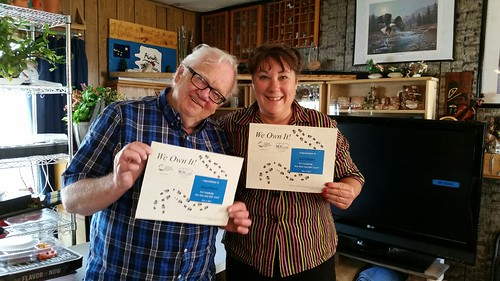
October is National Cooperative Month, and we're happy to spotlight several projects throughout the month that have been supported through USDA Rural Development's Cooperative Services. John McNamara is a Cooperative Development Specialist with the Northwest Cooperative Development Center in Olympia, Washington, and his story below helps illustrate how resident-owned communities benefit when their members are proficient with new technology:
Manufactured home communities play an important role in meeting the need for affordable housing in the Northwest and across the nation. Through cooperative action, many people now have the opportunity to create resident-owned communities (ROCs), securing the land beneath their homes for perpetuity.
Once a cooperative completes such a purchase, residents have responsibilities to govern and manage their communities. The Northwest Cooperative Development Center (NWCDC), a ROC USA® certified technical assistance provider (CTAP), is charged with providing guidance to community leaders as they carry out these duties. A major challenge is maintaining good communications among co-op members and helping them balance their work/life needs.
It is becoming increasingly important to supplement communications with Internet technologies. Progress has been made in connecting rural residents to broadband and “next-generation” Internet. But a digital divide still exists between rural and urban communities.
Resident-owned communities often have limited ability to bridge this divide, whether caused by a lack of hardware or software, or the ability to use it – or for all of these reasons. NWCDC, in partnership with ROC USA, is seeking to close this gap by bringing the benefits of modern information technology to the communities in its network.
To accomplish this, ROCs are testing standardized curriculum and software systems designed to help co-op members develop increased technology self-sufficiency. The curriculum should also help CTAPs better manage a growing portfolio of clients. Communities in the Washington towns of Moses Lake and Puyallup are serving as a pilot project intended to create a nationally replicable model.
There are broad aspirations for the initiative. “A resident-owned community is more than just a homeowner’s association; it is a business that requires constant attention, maintenance, oversight and nurturing,” says Daniel Luis Arrañaga, a CTAP for NWCDC. Goals are to promote residents’ computer fluency and more efficient and productive time allocation for CTAPs, he notes. Another goal is to help build leadership in communities.

Many resident-owners of ROC’s have never had – nor necessarily needed – access to information technology. To overcome this challenge, NWCDC has partnered with students from the Evergreen State College in Olympia to create curriculum to teach adults basic skills in e-mail, on-line editing and typing. Arrañaga began using Google Docs, a free software word processing application, to work with community members.
“The great thing is that I can get on the document with board members who are 250 miles away and train them on how to make an agenda without making an eight hour round-trip drive,” says Arrañaga.
The goal of this initiative is to give resident-owners a greater sense of ownership by using IT to research solutions to community problems, find needed vendors and to create an archive of organizational documents that all members can access and share. It will reduce the need for CTAPs to provide some of these services, opening more time to work with new clients and providing for more efficient use of funds needed to develop new ROCs.

